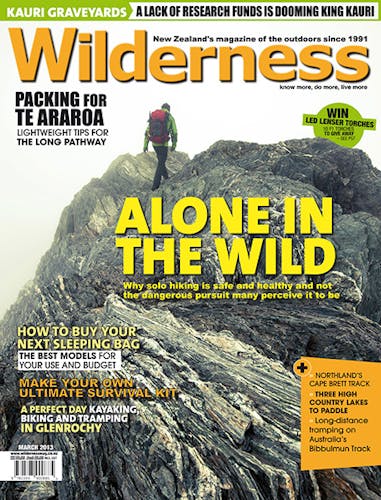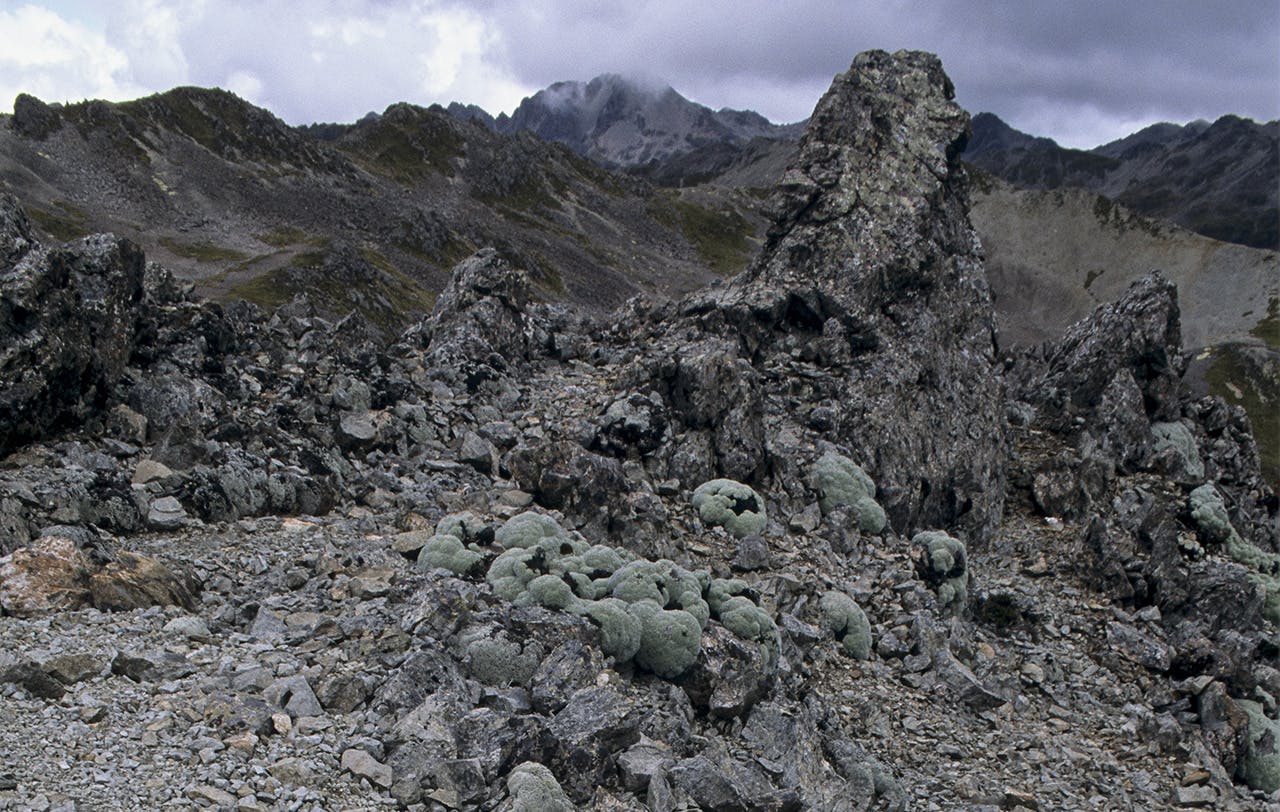Three places to see these characteristic New Zealand plants
Trampers facing foul weather in the mountains can pull on a balaclava, don extra storm gear and if conditions turns really nasty, scamper off the tops into the shelter of the forest. Alpine plants, of course, don’t have these options and to survive the often-brutal climate of their mountain habitat must instead rely upon some clever adaptations.
Some of the most distinctive alpine plants are the so-called cushion plants, which form compact mounds, often on rocky outcrops or on riverbeds and even on barren talus slopes. The cushion appearance owes its form to closely packed leaves, compressed so tightly together that the underlying stems remain hidden. This trick protects the plant from the worst ravages of wind, drought and frost in the mountain environment. The woolly appearance of the larger species means they are often known as vegetable sheep, and have fooled many a high country musterer into sending their dogs over the yonder ridge, chasing the lost merino back to the flock.
New Zealand has nearly two dozen species of cushion plants belonging to Rauolia and Haastia genera. Rauolia has 20 New Zealand species, only four of which do not extend into the alpine zone. Some, like Rauolia hectorii, form hard ground-hugging mats. Others, like Raoulia eximia, can reach sizes of over 2m, with softer cushions up to 30cm thick. It has dark red florets that sprout like tufts, while in contrast Rauolia grandiflora sports quite striking white flower-heads. Haastia has only three New Zealand species, all of them South Island alpine plants, with Haastia sinclairii the most widespread.
With growth usually limited to a few short months over summer, alpine plants must waste nothing and conserve what little resources they have. Many cushion plants have adopted a self-composting method where decay of any dead branches and leaves forms a sort of peat underneath. With these nutrients and moisture trapped inside, vegetable sheep live – partly – on the product of their own decay.
An excellent new book, Above the Treeline, A Nature Guide to Alpine New Zealand by distinguished botanist Alan Mark, is a comprehensive reference to these and other fascinating alpine plants.
Kaweka Range, Kaweka Forest Park, Hawke’s Bay
Despite its sparse soils and exposed, wind-prone summits, the Kaweka Range sports a surprisingly diverse range of alpine plants, including the cushion plant Rauolia albosericea. A poled route leads onto to the tops from the car park at Makahu Saddle, passing Dominie Biv and reaching the range crest just north of the high point Kaweka J. A good day trip during summer, or a weekend trip with a night at Back Ridge Hut.
Holdsworth-Jumbo, Tararua Forest Park, Wairarapa
The Tararua Range offers some of the North Island’s most accessible tops. Cushion plants can be found in the more sheltered spots between Mt Holdsworth and Jumbo, a popular 2-3 day circuit in the park with three huts: Powel, Jumbo and Atiwhakatu.
Robert Ridge, Nelson Lakes National Park, Nelson
Robert Ridge has several stunning alpine basins, with Lake Angelus occupying the largest one. Cushion plants adorn the ridge in many places, sometimes heaped high on rock outcrops. A poled route over the ridge leads to Angelus Hut, a popular tramping destination.








